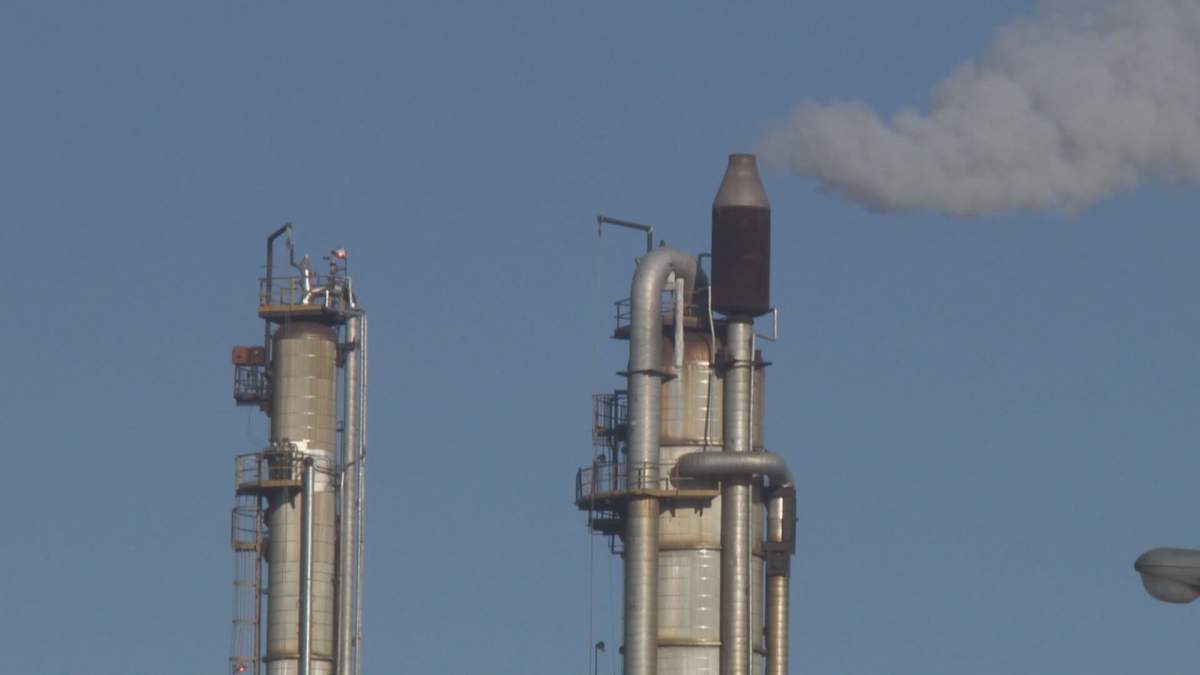In the fight against a carbon tax, the government of Saskatchewan recently introduced a climate change plan of its own.

“This plan is broader and bolder than a single policy such as a carbon tax and will achieve better and more meaningful outcomes over the long term,” Environment Minister, Dustin Duncan said.
The “made-in-Saskatchewan” plan emphasizes technology and carbon offsets as a solution over a direct price on carbon.
“This is about protecting our people and communities as much as it is about working with industry and others to reduce emissions here in Saskatchewan,” Duncan said.
That is something Margot Hurlbert, a professor at the Johnson Shoyama Graduate School of Public Policy, says is an advantage of the plan.
“It allows for consultation which is very very important in relation to industry in Saskatchewan, is talking to the specific industries about how they can meet carbon reductions efficiently and competitively,” she said.

Get daily National news
While the strategy focuses on heavy emitters such as the mining and oil and gas sector, the Saskatchewan Environmental Society says the plan fails to specify an overall target.
“I don’t see in this plan any projection of what kind of emission reductions this plan would achieve, so I think it’s really hard to regard this as an adequate response to the need,” Researcher, Ann Coxworth said.
However, the government plans to enter consultations to set standards over the next year.
Heavy emitters would be allowed to purchase carbon offsets, earn performance credits, or pay into a technology fund.
“For years and years, the United Nation bodies have been struggling how to set up an appropriate accounting system for this kind of thing.” Coxworth said. “So I think we should be focusing much more on the things that will clearly reduce emissions.”
Still, Coxworth says the national target requires a reduction of 30 per cent below 2005 levels by 2030. If that’s distributed among the different jurisdictions in Canada, Saskatchewan would need to cut its emissions by about 27 megatonnes.
Coxworth adds that a carbon tax however could be a source of funding and a flexible tool that individuals and businesses could respond to in a way that makes the sense to them.
“Because the revenue from the carbon tax would stay in Saskatchewan, I think it’s a shame the government is choosing not to include that as part of the strategy,” she said.
But Hurlbert says there’s a lot “what ifs” when it comes to that model.
“The economists will tell you that a tax could be levied and a tax could be collected and then it could be given back to all the people,” she said. “There’s a lot of could be in that system, so it’s not that a tax wouldn’t work, it would, but then its how does the tax get written, who’s exempted and how is it returned to people.”
At the same time, the province did reaffirm their commitment to increase renewable power generation to 50 per cent by 2030 and reduce greenhouse gas emissions by 40 per cent, which Coxworth says is a positive.
The planned implementation date of this strategy is Jan. 1, 2019, a full year after Ottawa plans on implementing a carbon tax in non-compliant provinces.








Comments